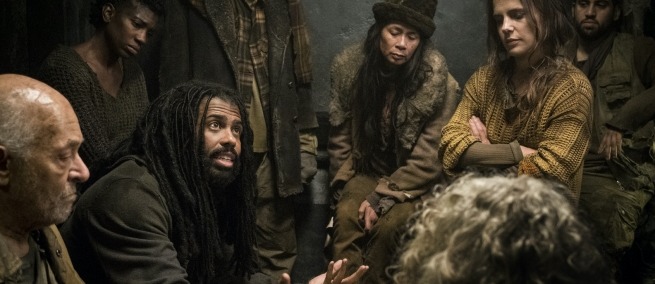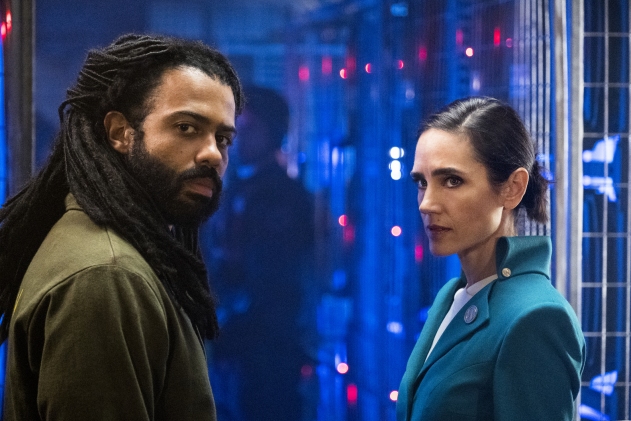
This article is part of Peer Review, an ongoing series in which we commission scientists to write about topics in film or television. Read past pieces here.
In normal times, people are typically entertained by dystopia perhaps because it makes them feel better about their lives, or provides an opportunity to vent disappointment and despair. In the middle of a disaster like the current pandemic, a dystopian movie or TV show can also be educational. What can we learn about COVID-19 from TNT’s SNOWPIERCER?
In Episode 1, the narrator tells us that after the climate changed, scientists tried to cool the earth but mistakenly froze it to the core; outdoor temperatures are minus 100 degrees Celsius. However, there is a perpetual-motion train of 1,001 cars that has been circling the earth for over six years. The rich pay to live aboard and enjoy simulacra of their normal luxuries (school, entertainment, fresh food, night clubs). The poor who fought their way on are steerage-class passengers. The insect-based protein bar rations they are given are being cut and starvation threatens, so one car of passengers resolves to rebel immediately. The action and character drama unfolds from here toward an enigmatic conclusion, but this set-up alone is food for thought about our own predicament.
First, as with the ill-fated global cooling in SNOWPIERCER, our own virus is human made, the likely result of too much human encroachment on bats. Second, our disaster also unfolds in the human reactions to a natural phenomenon. The coronavirus is a new biological virus that is naturally highly infectious. But given the uneven distribution of scarce and valued resources such as health care access, good nutrition, spacious dwelling places, and secure employment, which already existed, poor and nonwhite people are more vulnerable to the virus than the rich and white. Our civilization makes our reactions to the virus more complicated than sharing a train, but like the perpetual motion train, society is our only means for survival––even those who physically leave densely populated areas are dependent on money and the internet to maintain their lives. The third similarity between the COVID-19 pandemic and those rebelling on SNOWPIERCER is that we do not know what will happen. Will the virus mutate into more deadly forms? Will there be an effective and safe vaccine? Can we be sure that a vaccine will be fairly distributed and that enough people will take it?

Daveed Diggs and Jennifer Connelly, photograph by Justina Mintz
COVID-19 has also sparked collective awareness of injustice. Mass demonstrations may be our own form of collective rebellion against the leaders of a system that sustains criminal acts of homicide by police. Indeed, some think that our rebellion expresses outrage about deep social inequalities that have resulted in higher COVID-19 illness and death among African Americans, as well as ongoing police homicides against unarmed black victims. This rebellion may finally amount to a non-violent revolution. Should that happen, and if we survive COVID-19, we can hope that our human-made disaster of climate change will not result in further human-made inequalities. In other words, the final, literal lesson of SNOWPIERCER may be to take care that the cure for climate change will not exaggerate social inequalities, kill most of the human population, and confine the rest to a claustrophobic quality of survival.
TOPICS